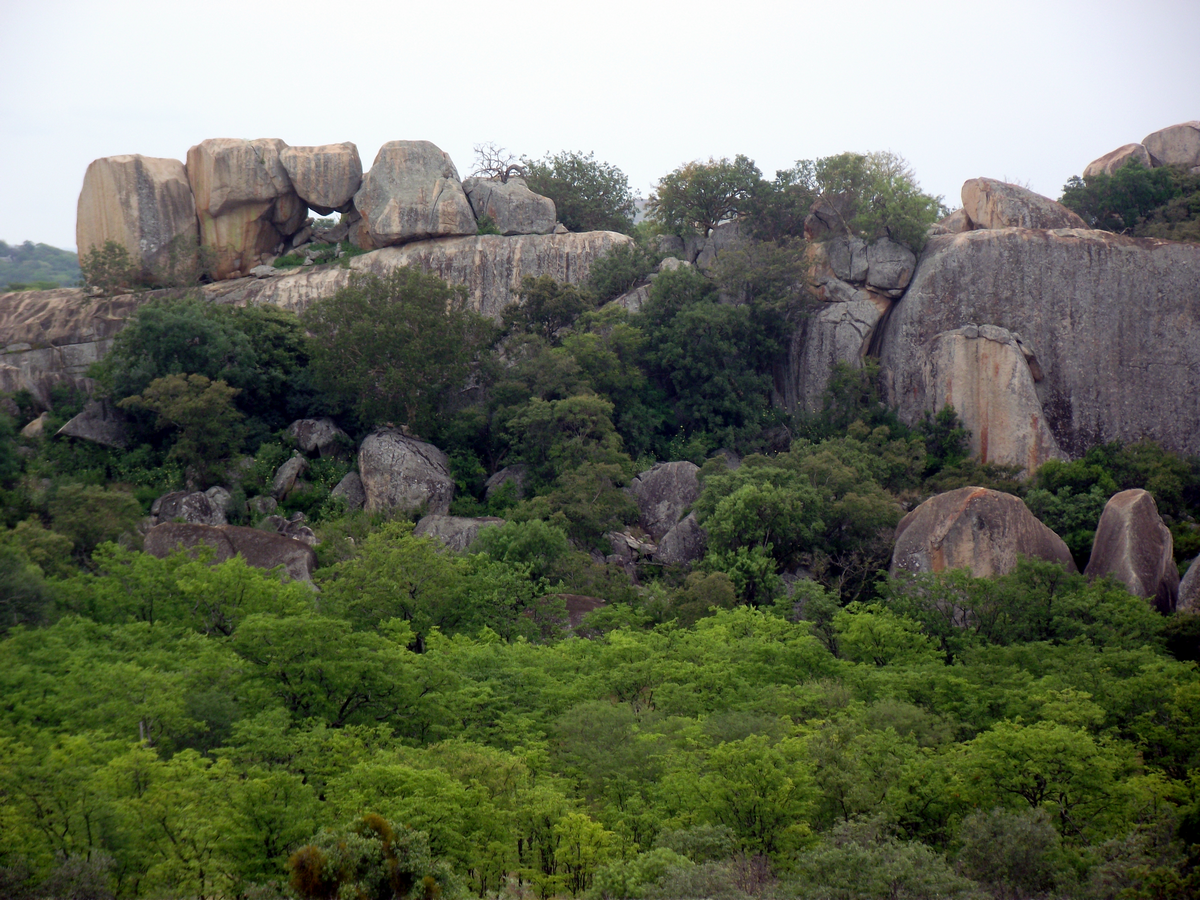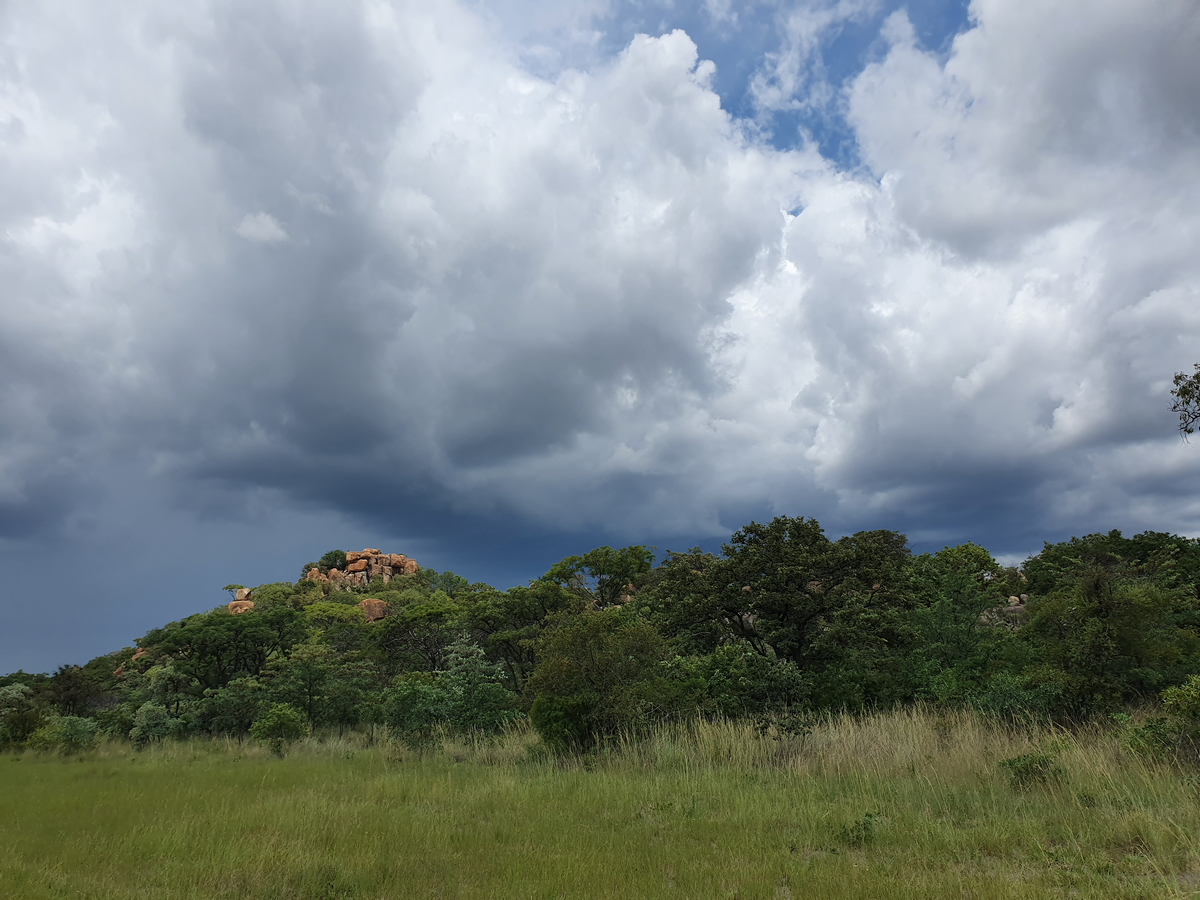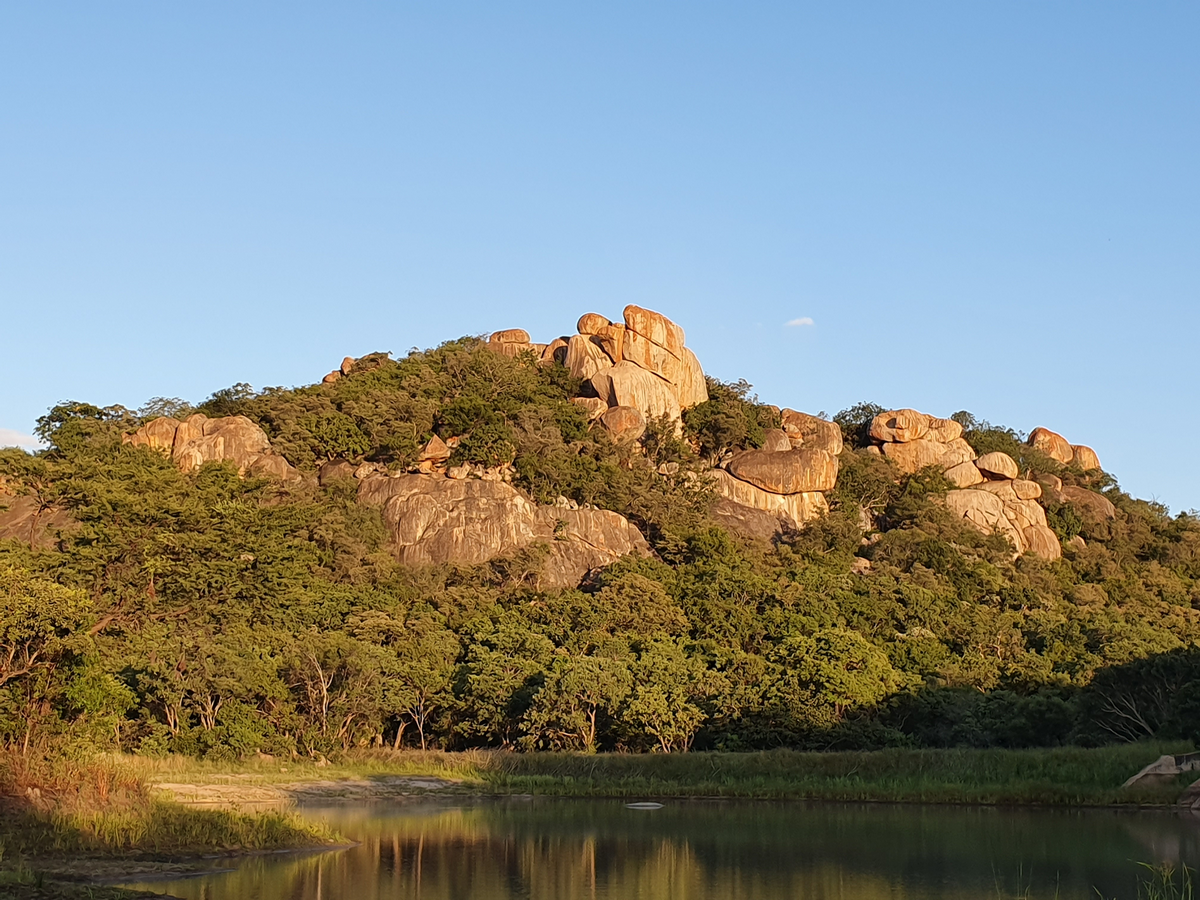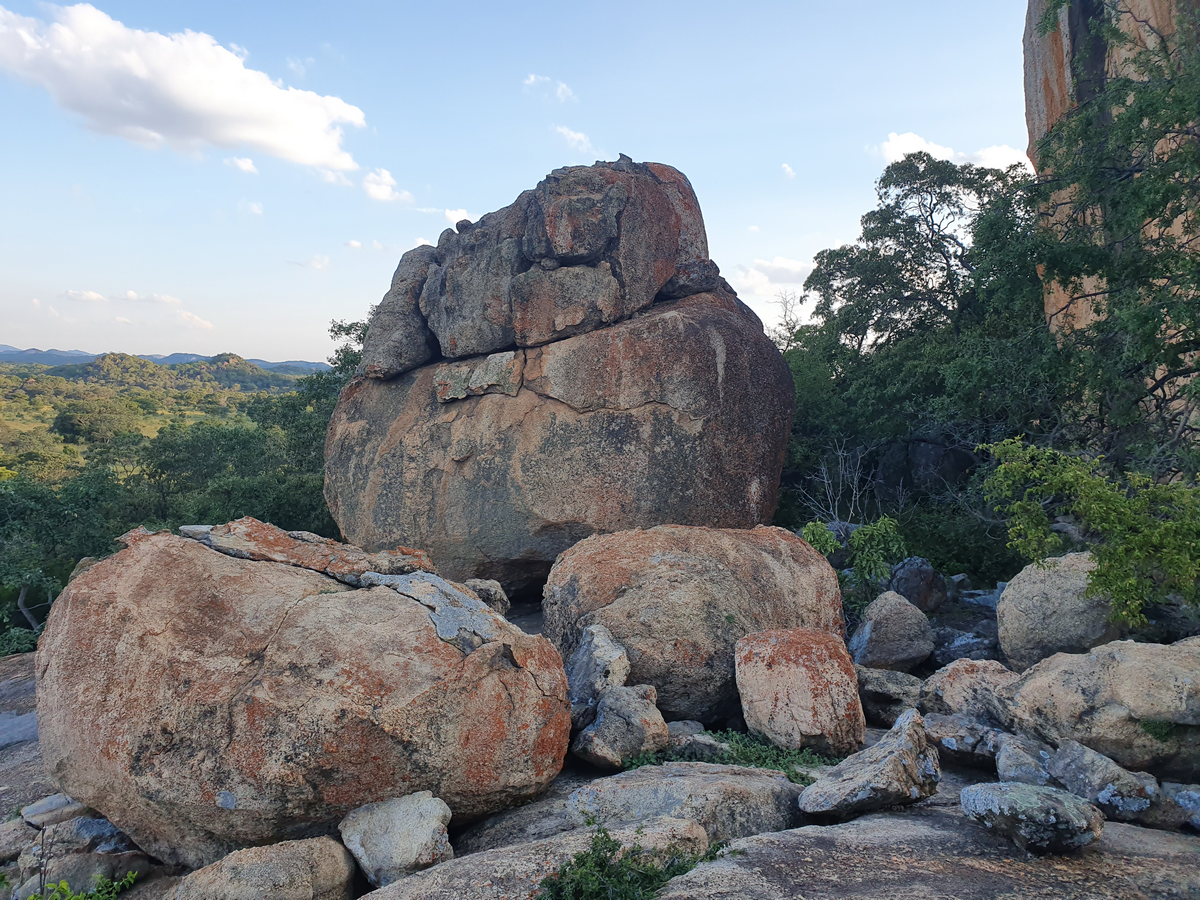The Matobo Hills – a proclaimed World Heritage site – are situated in south western Zimbabwe – 30 km south of the city of Bulawayo. These granite formations – consisting of massive towering monoliths, impossibly-balanced boulders, deep, heavily wooded gorges, caves, and hidden picturesque valleys – stretch for over 3 500 km2, all the way from Balla Balla in the east, to the Botswana border in the west.The Hills are breathtaking in their splendour.
The Matobo is well known for the abundance, and quality, of the Bushmen paintings found there. These lithe hunter-gatherers lived in the Matobo Hills for thousands of years, until the Bantu, migrating south from the great lakes, arrived in the area now known as Zimbabwe – around 900 years A.D.
Gradually, the Bushmen were squeezed out of their hunting grounds, finally taking refuge in the desert and semi-desert regions of what we now know as Namibia and Botswana. But the Bushmen left a rich record of their time in the Matobo. Their vibrant paintings record their spiritual beliefs, their dances, trances, their everyday life – and of course their hunts. Animals of every description are portrayed, and those long ago hunter-artists have captured the true essence of the hunt with just a few simple lines mimicking to perfection, the attitude, character and habits of the animals they knew so well.
Once the Bantu arrived, they too acknowledged the mystical, spiritual power of the Matobo, and to this day, the Matobo is acknowledged as home to the “mlimo” as well as other, lesser deities.
Much of Zimbabwe’s human history is woven into the fabric of the Matobo. The early hunters and settlers – whose road entered Matabeleland at the Mangwe Pass, the settlement at Lee’s castle – where famous people such as Thomas Baines, and Frederick Courtney Selous once camped – the fort at Mangwe, constructed during the Matabele rebellion, all these, and many more, are part of the Matobo. Mzilikazi, the great Matabele king, as well as Cecil John Rhodes – the founder of Rhodesia, are both buried in these brooding grey hills.
The granite hills (known as “koppies” in this part of the world) are home to wildlife of every description – including white rhinos, sable, kudu, zebra, wildebeest, impala, the delicate little klipspringer, and of course the Matobo leopard.
More than 300 species of birds have been recorded here, including good populations of the rare Black Eagle. The wild Matobo Hills. Mystical, magical….. timeless.
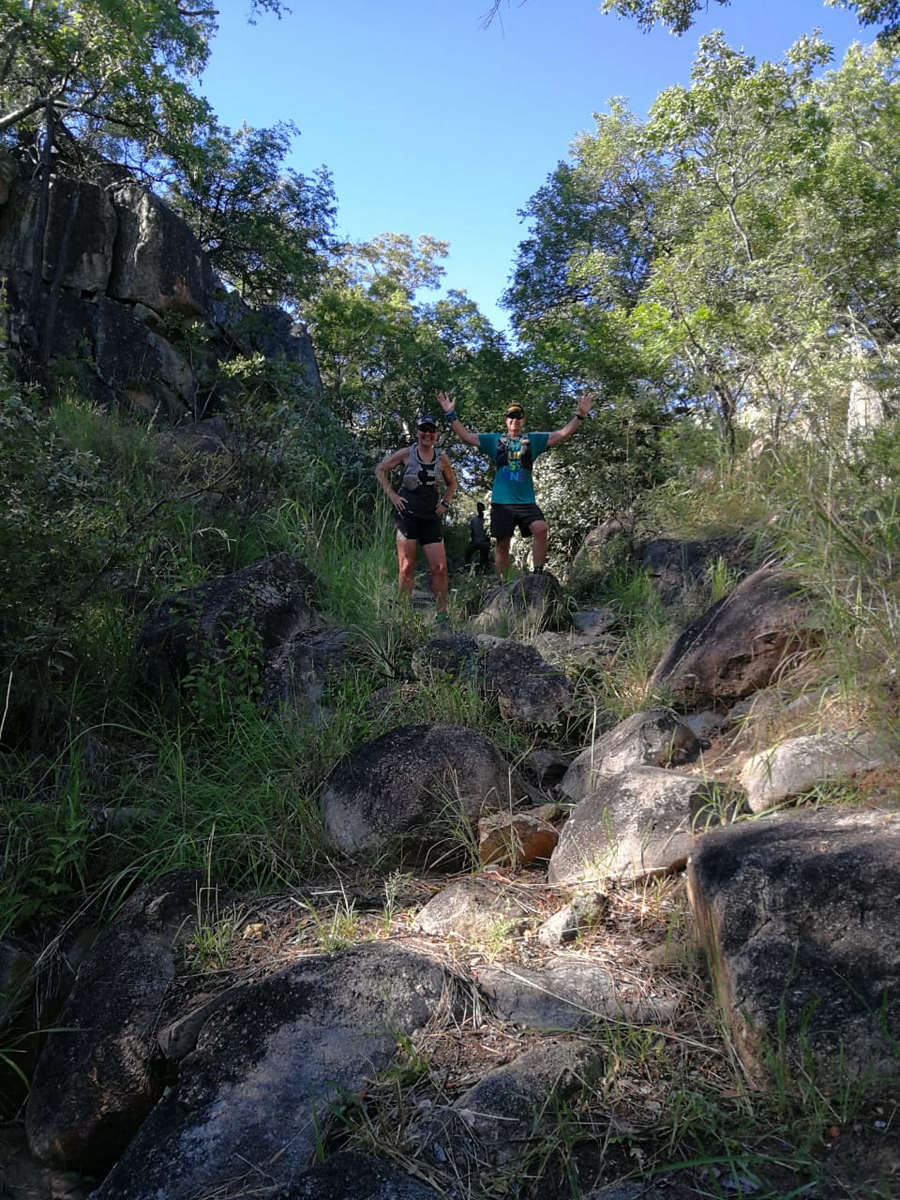
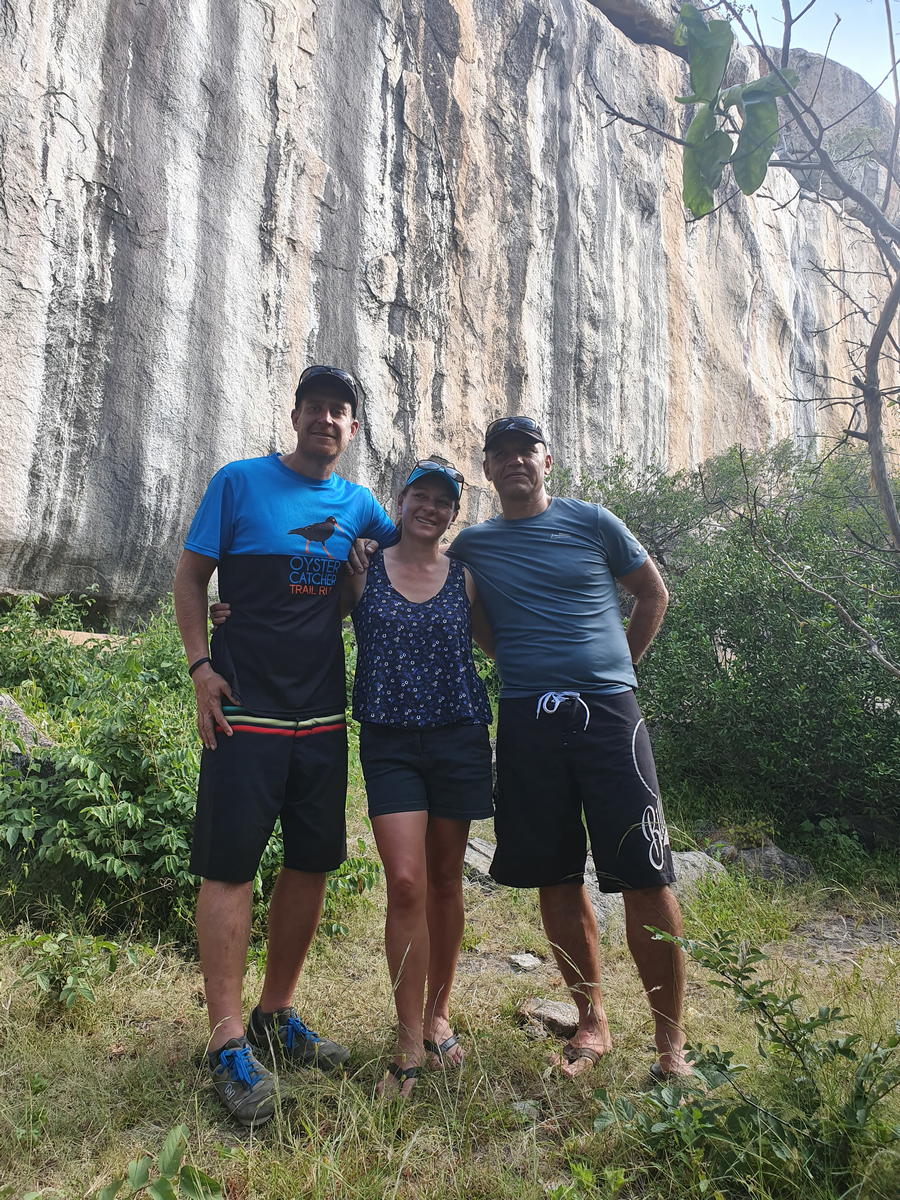
The Matobo is well known for the abundance, and quality, of the Bushmen paintings found there. These lithe hunter-gatherers lived in the Matobo Hills for thousands of years, until the Bantu, migrating south from the great lakes, arrived in the area now known as Zimbabwe – around 900 years A.D.
Gradually, the Bushmen were squeezed out of their hunting grounds, finally taking refuge in the desert and semi-desert regions of what we now know as Namibia and Botswana. But the Bushmen left a rich record of their time in the Matobo. Their vibrant paintings record their spiritual beliefs, their dances, trances, their everyday life – and of course their hunts. Animals of every description are portrayed, and those long ago hunter-artists have captured the true essence of the hunt with just a few simple lines mimicking to perfection, the attitude, character and habits of the animals they knew so well.
Once the Bantu arrived, they too acknowledged the mystical, spiritual power of the Matobo, and to this day, the Matobo is acknowledged as home to the “mlimo” as well as other, lesser deities.
Much of Zimbabwe’s human history is woven into the fabric of the Matobo. The early hunters and settlers – whose road entered Matabeleland at the Mangwe Pass, the settlement at Lee’s castle – where famous people such as Thomas Baines, and Frederick Courtney Selous once camped – the fort at Mangwe, constructed during the Matabele rebellion, all these, and many more, are part of the Matobo. Mzilikazi, the great Matabele king, as well as Cecil John Rhodes – the founder of Rhodesia, are both buried in these brooding grey hills.
The granite hills (known as “koppies” in this part of the world) are home to wildlife of every description – including white rhinos, sable, kudu, zebra, wildebeest, impala, the delicate little klipspringer, and of course the Matobo leopard.
More than 300 species of birds have been recorded here, including good populations of the rare Black Eagle. The wild Matobo Hills. Mystical, magical….. timeless.

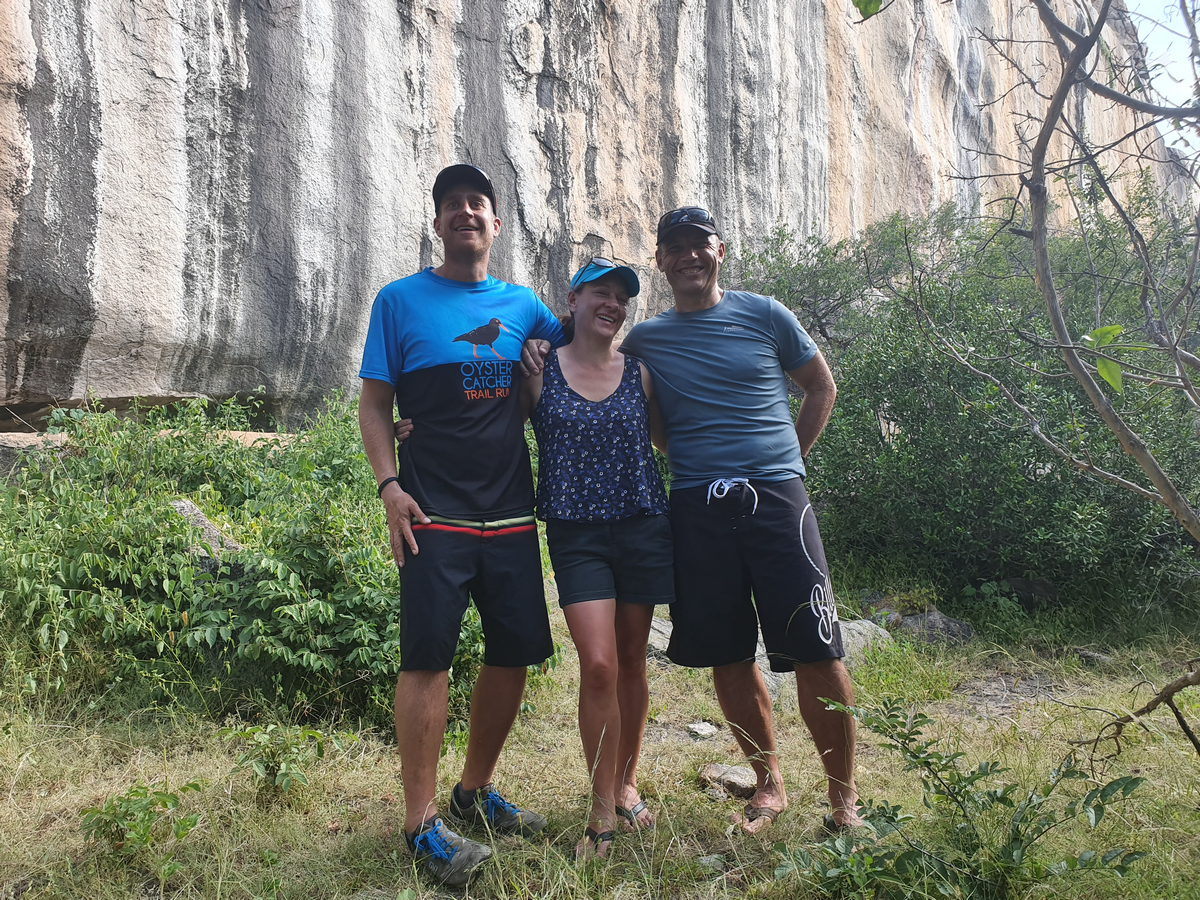
Book With us today
Complete this form & we'll be in touch

